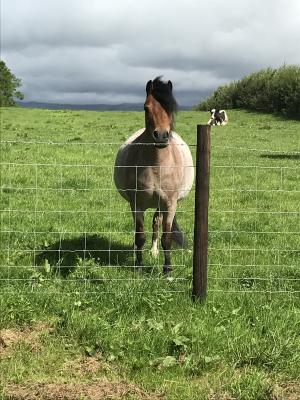
By Vet Selina Squarotti
When horses or ponies are not one hundred percent, it has an effect on their demeanour and appearance.
They might seem depressed, less lively and quiet. They might also lose condition, or their coat might not look nice and shiny.
Coat condition is usually a good indicator of general health. If the horse is poorly or has dietary imbalances, coat changes are usually quickly visible.
Poor coat can mean anything from dull, rough coat or retained winter coat.

A blood sample would give some non-specific indication of general health. It would help in picking up conditions such as anaemia, or to give an idea of the inflammation status.
However, a blood sample is only partially helpful for kidney or liver injury, since these conditions only show in the blood when extensive damage is present. If kidney or liver disease are suspected, further examinations are advised.
Imbalanced nutrition is another important cause of poor coat condition. Dietary changes, usually with the addition of a balancer need to be put in place and feed might need to be restricted or increased, depending on the horse’s status.
Retained winter coat is usually, but not always, a sign of PPID (Pituitary Pars Intermedia Dysfunction), which is also called Cushing’s disease.
This disease involves the growth of a benign mass or adenoma, in a gland of the brain, which results in high production of cortisol and laminitis.
Horses with Cushing’s can also show signs of lethargy, weakness, muscle wastage, abnormal fat deposit and laminitis at the same time.
Since poor coat can be easily seen by owners, it is advisable to have it promptly investigated, if a problem is suspected. This will avoid the worsening of a possible condition that could be affecting your horse or pony.